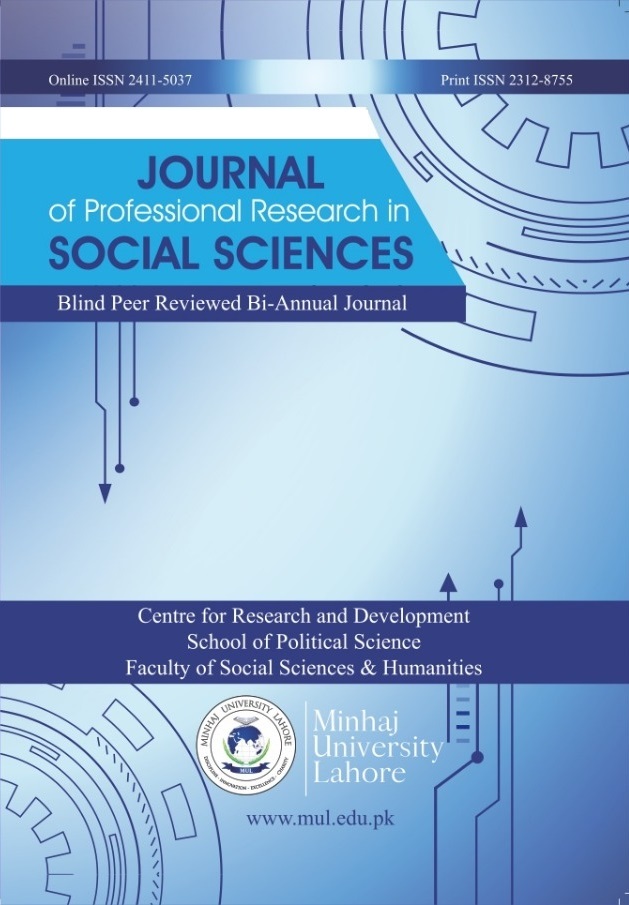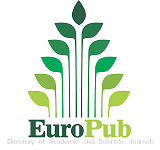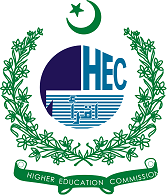Role of Casteism and Body Image in Predicting Marriage Prospects of Young Pakistani Adults
DOI:
https://doi.org/10.58932/MULA0057Keywords:
Casteism, Body Image, Marriage Prospects, Youth, PakistanAbstract
This study aimed to examine the relationship between their demographic characteristics, perceived body image, casteism and prospects of marriage among university students. The respondents were asked questions about gender, educational status, monthly family income, employment status, living area, family type, casteism and perceived body image. An online cross-sectional survey was conducted with the students’ studying at Pakistan's higher education institutes and universities. Findings indicate that most of the respondents were doing graduation (54.4 per cent) or post-graduation (42.7 per cent). Three-fourths of the respondents were unemployed. Majority of the respondents were female (59.6 per cent) and belonged to urban areas of the country. In addition, the study population had almost equal representation of each economic class. Independent sample t-test and one-way ANOVA were performed to see the effect of socio-demographic variables on marriage prospects of the respondents. Findings indicate that males had more prospects of marriage as compared to females. Correlational analysis indicated casteism had a statistically significant and positive relationship with marriage prospects (r=.353, p<.01) and body image (r=.125, p<.05). Moreover, body image had a statistically significant and positive relationship with marriage prospects (r=.197, p<.01). Furthermore, linear regression showed that casteism is a stronger predictor of prospects of marriage than body image. Based on the findings of this study, we can conclude that three factors i.e. caste, body image and economic status are important in predicting the marriage prospects among young adults. However caste came out as strong predictor as compared to body image. In a traditional Pakistani society, caste is not just a historical phenomenon but it contains deep cultural and socio-economic and socio-psychological ramifications.
References
Agha, N. (2016). Kinship in rural Pakistan: Consanguineous marriages and their implications for women. Women's Studies International Forum (Vol. 54, pp. 1-10). https://doi.org/10.1016/j.wsif.2015.10.005
Ahmad, K., Farooq, A., & Kayani, A. K. (2015). Marriage and family structures in the rural Punjab: A shift from conservative to contemporary patterns. International Journal of Sociology and Social Policy.
Ali, M. M., Rizzo, J. A., & Heiland, F. W. (2013). Big and beautiful? Evidence of racial differences in the perceived attractiveness of obese females. Journal of Adolescence, 36(3), 539-549.
Ahmad, S., Bhatti, M. A. A., & Imam, M. A. (2023). Balancing Control and Collaboration: Project Manager Accountability in Multi-Layered Governance Systems. Journal of Professional Research in Social Sciences, 10(2), 134-155.
Anwar, M. F. (2016). Role of Biradari in Politics: A Case Study of Voting Behaviour in Jhok Bodo Village, District Dera Ghazi Khan. Pakistan Journal of History and Culture, 37(2).
Arif, N., & Fatima, I. (2015). Marital satisfaction in different types of marriage. Pakistan Journal of Social and Clinical Psychology, 13(1), 36.
Ahmad, S., Ahmad, A., Shair, W., & Bhatti, M. A. A. (2022). Unlocking Pakistan's Youth Potential: A Comprehensive Analysis of Youth Development Indices and Strategic Alignment with the UN Sustainable Development Goals. Journal of Professional Research in Social Sciences, 9(2), 80-95.
Anjum, G., & Bhatti, M. A. A. Discover the Impact of Internet Usage on the Academic Performance of Library and Information Science Students. Indonesian Journal of Multidiciplinary Research, 4(2), 377-388.
Bakhshi, S., & Baker, A. (2011). 'I think a fair girl would have better marriage prospects than a dark one': British Indian adults´ perceptions of physical appearance ideals. Europe’s Journal of Psychology, 7(3), 458-486.
Farooq, A., Kayani, A.K. and Ahmad, K. (2015), "Marriage and family structures in the rural Punjab: A shift from conservative to contemporary patterns ", International Journal of Sociology and Social Policy, Vol. 35 No. 5/6, pp. 306-324. https://doi.org/10.1108/IJSSP-05-2014-0034
Barman, R. K. (2020). Casteism and caste intolerance in India: A study on casteism of contemporary West Bengal. Contemporary Voice of Dalit, 12(2), 165-180, https://doi.org/10.1177/2455328X19898451
Bhushan, L. I., & Sinha, R. B. (1995). A measure of casteism. Psychological Studies, 40(2), 107-109
Blau, P. M., Beeker, C., & Fitzpatrick, K. M. (1984). Intersecting social affiliations and intermarriage. Social Forces, 62(3), 585-606, https://doi.org/10.1093/sf/62.3.585
Bove, C. F., & Sobal, J. (2011). Body weight relationships in early marriage. Weight relevance, weight comparisons, and weight talk. Appetite, 57(3), 729-742. https://doi.org/10.1016/j.appet.2011.08.007
Buss, D. M., & Barnes, M. (1986). Preferences in human mate selection. Journal of personality and social psychology, 50(3), 559.
Bhatti, M. B. A., & Khan, M. K. (2024). Implications of Project Managers’ Competencies on Project Success Moderating effect of Project Risk Management: A case of IT Sector in Lahore. Pakistan Journal of Multidisciplinary Research, 5(1), 66-85.
Cash, T. F., & Henry, P. E. (1995). Women's body images: The results of a national survey in the USA. Sex roles, 33(1), 19-28, https://doi.org/10.1007/BF01547933
Chabba, S. (2020). Indian matchmaking fraught with sexism, class and caste issues, Deutsche Welle, available at https://p.dw.com/p/3jVJt, accessed on 19/08/2022.
Chowdhry, P. (2004). Caste panchayats and the policing of marriage in Haryana: Enforcing kinship and territorial exogamy. Contributions to Indian Sociology, 38(1-2), 1-42. https://doi.org/10.1177/006996670403800102
Chughtai, M. A., Bhatti, M. B. A., & Naqvi, I. H. Ethics before Trust in Organization Public Relationships (OPRs): A Review of Real Estate Organizations.
Datoo, A. K. (2010). Media and youth identity in Pakistan: Global-local dynamics and disjuncture. Journal of Alternative Perspectives in the Social Sciences, 2(1), 192-215.
D’Lima, T., Solotaroff, J. L., & Pande, R. P. (2020). For the sake of family and tradition: honour killings in India and Pakistan. ANTYAJAA: Indian Journal of Women and Social Change, 5(1), 22-39.)
Frei, J. R., & Shaver, P. R. (2002). Respect in close relationships: Prototype definition, self‐report assessment, and initial correlates. Personal Relationships, 9(2), 121-139.
Fricke, T. E., Syed, S. H., & Smith, P. C. (1986). Rural Punjabi social organization and marriage timing strategies in Pakistan. Demography, 489-508, https://doi.org/10.2307/2061347
Ghazal, S., Akram, I., Andleeb, S., Raza, M. A., & Asif, M. (2022). Growing Issue Of Late Marriages in Pakistan: A Qualitative Study. ASEAN Journal of Psychiatry, 23(2), 1-13, 10.54615/2231-7805.47241
Hill, T.S. (2020). Body Image, Marriage, and Sex. Healthy Humans Project, available at healthyhumansproject.com/tag/sexuality/, accessed on 19/08/2022.
Hosseini, S., Noroozi, M., & Montazery, G. (2017). Investigating the relation between women's body image and unconsummated marriage. Iranian Journal of Nursing and Midwifery Research, 22(5), 363, doi:10.4103/ijnmr.IJNMR_176_16
Hussain, R. (2005). The effect of religious, cultural and social identity on population genetic structure among Muslims in Pakistan. Annals of Human Biology, 32(2), 145-153.
Iram, H., & Muazzam, A. (2016). Self-esteem Body image and self-consciousness among Women after rejection of Marriage Proposals. Pakistan Journal of Gender Studies, 12(1), 71-86, https://doi.org/10.46568/pjgs.v12i1.200
Islam, T., Wei, J., Sheikh, Z., Hameed, Z., & Azam, R. I. (2017). Determinants of compulsive buying behaviour among young adults: The mediating role of materialism. Journal of adolescence, 61, 117-130.
Iversen, V., Krishna, A., & Sen, K. (2019). Beyond poverty escapes social mobility in developing countries: A review article. The World Bank Research Observer, 34(2), 239-273.
Jawad, S., Naveed, H., & Akram, M. B. (2020). Academic Performance of Enrolled Students in the University of Lahore, Pakistan. Quest Journal of Management and Social Sciences, 2(2), 357-365.
Jauregui, B., & McGuinness, T. (2003). Inter-community marriage and social change in contemporary India: Hybridity, selectivity and transnational flows. South Asia: Journal of South Asian Studies, 26(1), 71-85, https://doi.org/10.1080/085640032000063995
Jones, G. W. (2017). Changing marriage patterns in Asia. In Routledge handbook of Asian demography (pp. 351-369). Routledge.
Kark, M., & Karnehed, N. (2012). Weight status at age 18 influences marriage prospects. A population-based study of Swedish men. BMC Public Health, 12(1), 1-7.
Khan, H. G. A., Sultana, A., & Siraj, A. E. (2011). Consanguinal Marriages in Pakistan: A Tradition or A Cutural Politics and Possible Management Measures?. Canadian Social Science, 7(1), 119-123.
Khalid, A., & Hassan, S. S. (2019). Inter-generational differences in partner selection criteria among women in Pakistan. Pakistan Journal of Women's Studies= Alam-e-Niswan= Alam-i Nisvan, 26(2), 127-148.
Kikon, D. (2022). Dirty food: Racism and casteism in India. Ethnic and Racial Studies, 45(2), 278-297, https://doi.org/10.1080/01419870.2021.1964558
Latif, A., Khan, S., & Farooq, W. (2011). Impact of media on development of eating disorders in young females of Pakistan. International Journal of Psychological Studies, 3(1), 122.
Littlewood, R. (2004). Commentary: Globalization, culture, body image, and eating disorders. Culture, medicine and psychiatry, 28(4), 597
Maqsood, A. (2014). ‘Buying Modern’ Muslim subjectivity, the West and patterns of Islamic consumption in Lahore, Pakistan. Cultural Studies, 28(1), 84-107.
Maqsood, A. (2021). Love in liminality: the modes and spaces of intimacy in middle-class Pakistan. South Asian History and Culture, 12(2-3), 261-277.
Muhammad, N. (2011). Inheritance in property: a gender based discriminatory practice in rural areas of Tangi, district Charsadda. Sarhad J. Agric, 27(1), 143-146.
Mehdizadegan, I., & Renani, Z. S (2013). Comparing sexual satisfaction, commitment, marriage, marital intimacy and body image in employed married women and housewives. Woman and family studies journal, 8, 135-50.
Pakistan Bureau of Statistics. (2022). Area, population by sex, sex ratio, population density, urban proportion, hosuehold size and annual growth ratehttps://www.pbs.gov.pk/sites/default/files/population/2017/tables/pakistan/Table01n.pf
Rafaqat, M. ., Azad, F. ., Ahmad, S. ., Aijaz, K. ., Ikram, S. H. ., Bashir, U. ., Bhatti, M. A. A. ., & Saeed, S. . (2024). Impact of Governance and Strategy Performance on Employer Branding. Research Journal for Societal Issues, 6(2), 852–867.
Allendorf, K., & Pandian, R. K. (2016). The decline of arranged marriage? Marital change and continuity in India. Population and development review, 42(3), 435.
Bhatti, M. B. A., & Durrani, M. K. (2024). The effect of project managers’ competencies on project success with mediating role of project stakeholders’ engagement: A case of IT sector. Journal of Management Info, 11(1), 51-73.
Akbar, A., Ahmad, S., Nadim, M., Bhatti, M. A. A., & Khan, H. (2024). Affect of Hrm on Employee Motivation Towards Green Creativity and Initiatives. Center for Management Science Research, 2(3), 197-216.
Akbar, A., Ahmad, S., Ali, M., Fayyaz, M. T., Ali, I., & Bhatti, M. A. A. (2024). Employee Development and Training: How HRM Helps in Staying Competitive in the Changing Market Condition. Al-Qanṭara.
Bhatti, M. A. A., & Nazir, M. U. (2024). The Impact of Project Process Management on Sustainable Project Success in the Construction Sector: The Moderating Role of Risk Management Practices. Bulletin of Business and Economics (BBE), 13(2), 1065-1072.
Pujols, Y., Meston, C. M., & Seal, B. N. (2010). The association between sexual satisfaction and body image in women. The journal of sexual medicine, 7(2), 905-916, https://doi.org/10.1111/j.1743-6109.2009.01604.x
Rafiq, A. (2016). New politics of the middle class. In Pakistan's Democratic Transition (pp. 84-106). Routledge.
Safdar, M. R., Akram, M., Sher, F., & Rehman, A. (2021). Socioeconomic Determinants of Caste-based Endogamy: A Qualitative Study. Journal of Ethnic and Cultural Studies, 8(2), 39-54.
Safdar, M. R., Nasar, A., Akram, M., & Yousaf, F. N. (2022). An assessment of the structural relationship between determinants and implications of caste‐based endogamy in Pakistan. International Social Science Journal, 72(243), 29-45, https://doi.org/10.1111/issj.12296
Saher, N., Matloob, T., & Shabbir, M. S. (2020). Exploring the role of Biradari in career growth: Evidence from public sector organizations of Islamabad. Journal of Research in Emerging Markets, 2(3), 13-24.
Sathar, Z. A., Kiani, M. F., & Soomro, G. Y. (1998). Some Consequences of Rising Age at Marriage in Pakistan [with Comments]. The Pakistan Development Review, 541-556.
Siddiqa, A. (2011). Pakistan's Modernity: between the Military and Militancy. Economic and Political Weekly, 61-70.
Shahzad, A. (2017). Differentials in female age at marriage in Pakistan: Have they changed or not?. Nust Journal of Social Sciences and Humanities, 3(1), 71-94.
Shoraka, H., Amirkafi, A., & Garrusi, B. (2019). Review of body image and some of contributing factors in Iranian population. International Journal of Preventive Medicine, 10.)
Small, N., Bittles, A. H., Petherick, E. S., & Wright, J. (2017). Endogamy, consanguinity and the health implications of changing marital choices in the UK Pakistani community. Journal of biosocial science, 49(4), 435-446.
Samuel, L. (2010). Mating, dating and marriage: Intergenerational cultural retention and the construction of diasporic identities among South Asian immigrants in Canada. Journal of Intercultural Studies, 31(1), 95-110.
Sultan, T., Ahmad, S., & Ayub, A. (2020). At risk of “leftover singles”: Dimensions and sociopsychological repercussions of delayed marriageability among educated females in Pakistan. The Family Journal, 28(4), 403-412.
Usman, A., & Amjad, A. (2020). Caste based endogamy in a Punjabi village of Pakistan. South Asian Studies, 28(2).
Yeung, W. J. J., Desai, S., & Jones, G. W. (2018). Families in southeast and South Asia. Annual Review of Sociology, 44, 469-495.




